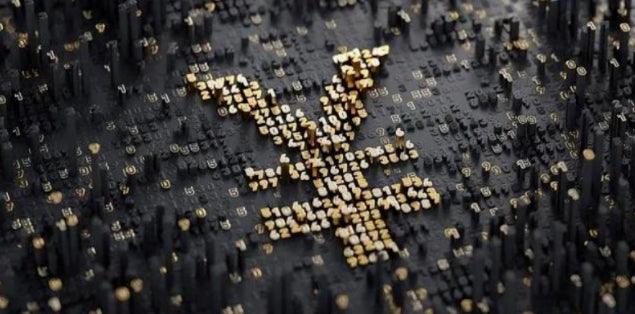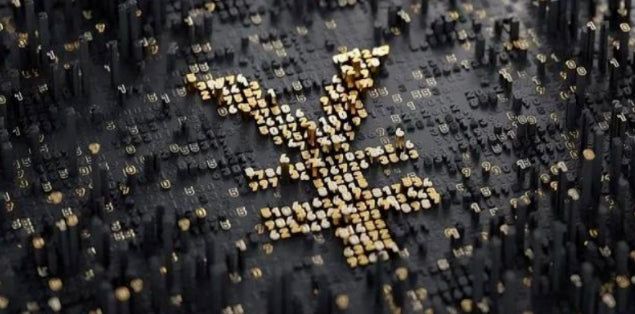Back to 6.5 Era! Future Trends in RMB Exchange Rate

During the four trading days from April 19 to 22, the RMB exchange rate depreciated continuously, returning to 6.5 after many months.
Many analysts attribute this to the continued release of interest rate hike signals from the Federal Reserve and the strengthening of the US dollar index. However, from the perspective of long-term market performance, it is unlikely that the RMB exchange rate will continue to depreciate, and will maintain two-way fluctuations in the future.
How will the RMB exchange rate go in the future?
"The central bank has numerous tools to stabilize the exchange rate." Xie Yunliang said that to analyze the exchange rate issue, it is necessary to consider both the market forces and the central bank's attitude. The central bank, as the ultimate player in the foreign exchange market, has a crucial influence on the exchange rate trend.
According to Xie Yunliang, the central bank has numerous tools to stabilize the exchange rate, including but not limited to activating the counter-cyclical factor, adjusting the foreign exchange deposit reserve ratio, adjusting the risk reserve for forward sales, tightening offshore RMB liquidity, and strengthening capital account controls.
He believes that in the short term, 6.6 may be a resistance level for the RMB exchange rate. 2.34% appreciation of the RMB mid-price for the whole year of 2021 is a reasonable outcome given the strong performance of exports.
With the downward pressure on exports increasing this year, a 2%-3% depreciation in the RMB exchange rate would result in a depreciation from 6.37 yuan to 6.6 yuan against the dollar by the end of 2021. This will not contradict the general tone of the exchange rate "maintaining basic stability at a reasonable equilibrium level", but will also enhance export competitiveness to a certain extent.
"Considering the long-term strength of China's economy has not changed, and considering the strong control ability of the central bank, we have reasons to believe that it is very difficult for the RMB exchange rate to depreciate out of control." Xie Yunliang said.
"There is still room for macro-prudential policy adjustment by the central bank in the future." Wu Dan also mentioned that, referring to Mundell's "impossible triangle" theory, China prefers to maintain monetary policy independence and exchange market stability, and the risk of exchange rate overshooting is relatively controllable, so the depreciation pressure on the RMB exchange rate can be viewed rationally, and the trend of two-way fluctuation will remain.
What signals will be released by the central bank's intensive action?
In addition to the first cut in the reserve requirement ratio of foreign exchange deposits for financial institutions, the central bank has recently been making intensive moves to release stability signals to the outside world.
Since mid-April, the central bank has operated a full-scale downgrade, and jointly issued 23 measures with the Bureau of Foreign Exchange to do its best to provide financial services for epidemic prevention and control and economic and social development, and also jointly held a symposium on financial support for the real economy with the CBRC to grasp the implementation of the recent financial policies, increase financial support for epidemic prevention and control and economic and social development, ensure smooth logistics and promote the supply chain cycle of the industrial chain.
Yi Gang, governor of the Central Bank of China, also stated outright at the Boao Forum for Asia 2022 annual meeting that China will continue to implement a prudent monetary policy and will use a variety of tools to provide more support for small, medium and micro enterprises and increase support for the real economy.
In the morning of the 26th, the central bank issued a news release saying that its person in charge said in an interview with the media that we are concerned about some recent fluctuations in the financial market, which are mainly influenced by investors' expectations and sentiments. The current fundamentals of China's economy are good, the economy has great potential for endogenous growth, and substantial progress has been made in preventing and resolving financial risks.
The person in charge said the central bank will increase the support of prudent monetary policy to the real economy, especially to support industries severely affected by the epidemic and small and medium-sized enterprises and individual entrepreneurs, as well as to support agricultural production and energy to preserve and increase supply. It will maintain a reasonable abundance of liquidity, promote the healthy and stable development of the financial market and create a favorable monetary and financial environment.
Lian Ping, chief economist of Plantation Investment and director of the Institute, believes that it is important to stabilize expectations in the current economic situation. Negative expectations about the future will inhibit residents' consumption, delay corporate investment and restrict economic growth. Stable expectations include two aspects: stable economic expectations and stable policy expectations.
Lian Ping said that stabilizing economic expectations is to let the market fully understand that China's economic growth is potentially capable. Stabilizing policy expectations is to let the market fully understand that China's attitude of implementing active macro policy is firm, and the role of macro policy in promoting the economy will gradually appear.
WE RECOMMEND
Related posts
- Subscribe MedInsights
- Subscribe MedInsights
- Subscribe MedInsights
- Subscribe MedInsights
- Subscribe MedInsights










